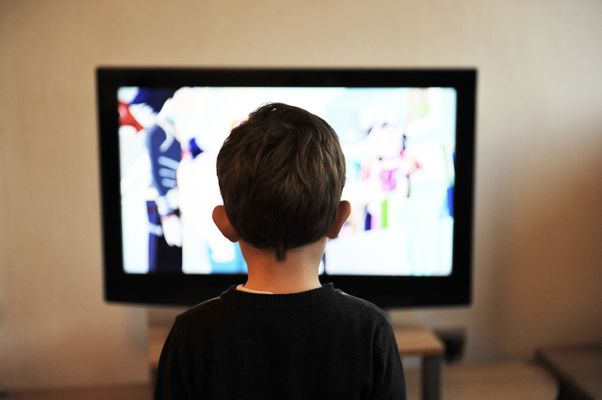2.2.2
Interactionism
Interactionism
Interactionism
Interactionalists believe that a child is born tabula rasa (or blank slate) and learns language based on their interaction with caregivers. You may have heard of the idea of ‘nature vs nurture’ and interactionalists argue for nurture.


Child directed speech
Child directed speech
- The process of talking to a child is called ‘child directed speech’ and is often shortened to CDS.


Bruner
Bruner
- The main interactionalist is Bruner.
- He believes that a child must interact with caregivers in order to learn how to use language.
- He created what he calls a LASS (Language Acquisition Support System) – a system designed to ‘scaffold’ a child in learning language (structuring responses in order to help a child to use language more accurately).


Catherine Snow
Catherine Snow
- Catherine Snow coined the term ‘motherese’ to describe the language used by mothers to talk to their children.
- She argues that language acquisition happens as a result of the interaction which takes place between the mother and her child.
- Interactions with fathers use ‘fatherese’ and anybody else uses ‘otherese’.


John Snarey
John Snarey
- John Snarey states that fathers interact with their children in different ways to the way their mothers do.
- He says that ‘roughhousing’ with the father teaches that biting, kicking and other forms of violence are unacceptable and how to gain self-control.


John Snarey - fatherese process
John Snarey - fatherese process
- John Snarey believes that the following form part of the fatherese process:
- Tickling, wrestling and throwing the child in the air.
- Chasing.
- Loud volume.
- Bouncing rather than cuddling and rough rather than gentle.
- Encouragement of competition.
- Promotion of independence over security.
- Less simplification of speech.
- Challenging the child to expand vocabulary and linguistic skills.


Case study
Case study
- Jim - Bard and Sachs studied ‘Jim’ whose parents were deaf.
- Jim was exposed to various uses of language like the TV and the radio, but he passed the critical period (a term coined by Lenneberg to denote the period of time in which a child best learns language. After passing this time, a child will often struggle to acquire language).
- But interactions with a speech therapist helped him to acquire language. So this proves that there is a need for interaction.
Interactionism - Snow and Bruner
Interactionism - Snow and Bruner
Snow and Bruner argue that caregivers may use the following strategies as part of the scaffolding and CDS process:


Strategies
Strategies
- Recasting and reformulation – the caregiver repeats what the child said containing anything missing and needed to make a grammatically standard utterance.
- For example, a child might say ‘ball’ and the caregiver may respond with ‘you want the ball?’.
- Expansion – the caregiver makes the utterance more complex by expanding on what they said.
- For example, ‘Amy runned’ might be expanded to form ‘Amy ran the race’.


Strategies (cont.)
Strategies (cont.)
- Exaggerated prosodic cues – exaggerating intonation, varying pitch and using higher intonations.
- Expatiation – expressing what the child said giving more information.
- For example, ‘food hot’ might be expatiated to ‘the food is too hot! We’ll let it cool down first’.
- Overarticulation – the caregiver stretches out vowel sounds in words.
- For example, ‘mummy’s going to get a drink of teeeeeeeeea’.


Rhoades
Rhoades
In addition to this, Rhoades adds that the following are also used:
- Short and simple sentences which are melodic.
- Focus on what the child is doing.
- Repetition of what the child and caregiver say.
- Pausing between words.
- Higher frequency of interrogatives and imperatives.
- Slower speech.
Interactionism - Grice
Interactionism - Grice
In 1975, Grice proposed a set of maxims to define features which must be present in conversation – he calls these cooperative principles (things which people must do to cooperate in conversation). His maxims are as follows:


1) The maxim of quantity
1) The maxim of quantity
- The contributions must carry enough information (and not too much).


2) The maxim of quality
2) The maxim of quality
- The contributions must be truthful.


3) The maxim of relation
3) The maxim of relation
- The contributions must be relevant and pertinent to discussion.


4) The maxim of manner
4) The maxim of manner
- The contributions must be clear and limit ambiguity.


Discussing interactionism
Discussing interactionism
- As part of your discussion, you may choose to bring in the ways in which caregivers try to influence a child to use these maxims.
1Language Levels
1.1Assessment Objectives
1.2Lexis
1.2.1Introduction
1.2.2Common, Proper, Abstract & Concrete Nouns
1.2.3Collective Nouns
1.2.4Adjectives
1.2.5Main, Auxiliary & Copular Verbs
1.2.6Dynamic & Stative Verbs
1.2.7Transitive, Intransitive, Active & Passive Verbs
1.2.8Mood of Verbs
1.2.9Adverbs
1.2.10Personal, Possessive & Reflexive Pronouns
1.2.11Relative & Demonstrative Pronouns
1.2.12Determiners
1.2.13Conjunctions
1.2.14Synonyms, Antonyms & Phonological Features
1.2.15End of Topic Test - Lexis
1.3Grammar
1.4Semantics & Pragmatics
1.5Discourse Structure, Graphology & Orthography
2Language, The Individual & Society
2.1Children’s Language Development
2.2Children's Language Development - Theories
2.3Literacy Development: Reading
3Language Diversity & Change
3.1The Importance of Gendered Language
3.2Social Groups
3.3Occupational Groups
3.4Accents & Dialects
3.5Language Change
Jump to other topics
1Language Levels
1.1Assessment Objectives
1.2Lexis
1.2.1Introduction
1.2.2Common, Proper, Abstract & Concrete Nouns
1.2.3Collective Nouns
1.2.4Adjectives
1.2.5Main, Auxiliary & Copular Verbs
1.2.6Dynamic & Stative Verbs
1.2.7Transitive, Intransitive, Active & Passive Verbs
1.2.8Mood of Verbs
1.2.9Adverbs
1.2.10Personal, Possessive & Reflexive Pronouns
1.2.11Relative & Demonstrative Pronouns
1.2.12Determiners
1.2.13Conjunctions
1.2.14Synonyms, Antonyms & Phonological Features
1.2.15End of Topic Test - Lexis
1.3Grammar
1.4Semantics & Pragmatics
1.5Discourse Structure, Graphology & Orthography
2Language, The Individual & Society
2.1Children’s Language Development
2.2Children's Language Development - Theories
2.3Literacy Development: Reading
3Language Diversity & Change
3.1The Importance of Gendered Language
3.2Social Groups
3.3Occupational Groups
3.4Accents & Dialects
3.5Language Change
Unlock your full potential with Seneca Premium
Unlimited access to 10,000+ open-ended exam questions
Mini-mock exams based on your study history
Unlock 800+ premium courses & e-books